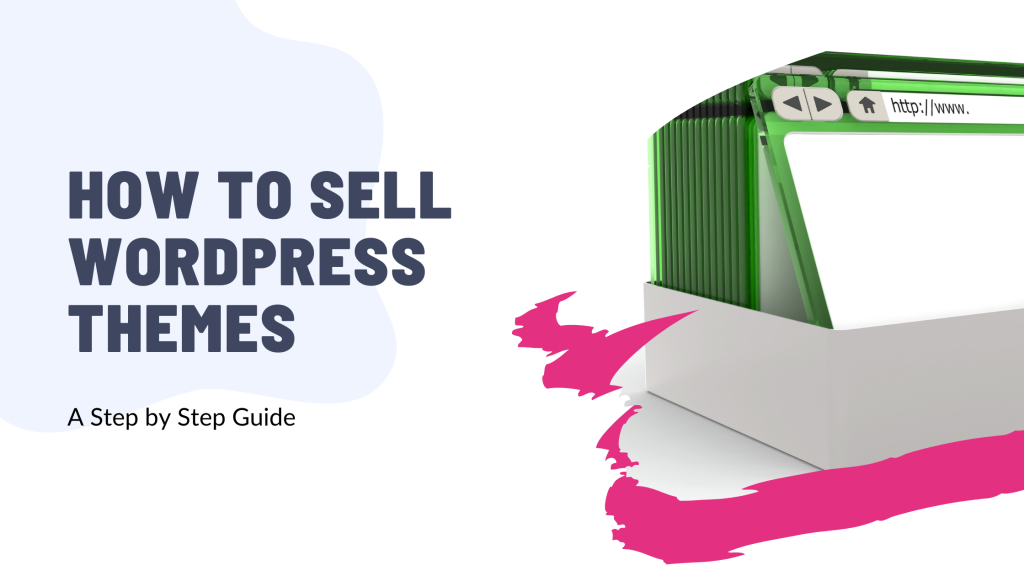Are you ready to turn your creativity into cash by selling WordPress themes?
Whether you’re a seasoned developer or a design enthusiast, this complete guide is your ticket to success in the thriving WordPress marketplace.
Dive into the world of theme creation and discover how to craft products that captivate users and generate sales.
We’ll walk you through every step, from design tips to marketing strategies, ensuring you’re equipped with all the tools you need to make your themes stand out.
Get ready to transform your passion into profit and build a thriving business doing what you love!

If you need help creating your website, don’t hesitate to contact us. Click here.
Understanding the WordPress Theme Market
To make your themes successful, start by analyzing current trends and popular theme features. This involves staying updated with design preferences and functionalities that users are currently demanding. According to a recent study by W3Techs, WordPress powers over 40% of all websites, highlighting a massive opportunity for you.

It’s also crucial to study your competitors and market leaders. What are they doing right? Learn from their strengths and identify gaps in the market where your themes can excel.
Once you’ve researched the market, it’s time to define your Unique Selling Proposition (USP). This is what sets your theme apart from others. Is it a unique design, superior functionality, or perhaps a focus on a specific niche market?
Developing Your Theme
Now that you have a well-planned design, it’s time to bring your WordPress theme to life through development. This phase involves selecting the right tools and ensuring your theme is robust, functional, and accessible across various platforms.
Choosing the Right Tools and Technologies
The first step in development is selecting a coding framework or theme builder that suits your needs. If you have a strong coding background, you might prefer frameworks like Bootstrap or Foundation to build your theme from the ground up.
Alternatively, if you prefer a more visual approach, consider using a theme builder like Elementor or Beaver Builder, which offer drag-and-drop functionalities.

Compatibility is key, so ensure your theme works seamlessly with popular plugins such as Yoast SEO, WooCommerce, and Contact Form 7. These plugins are widely used and can significantly enhance your theme’s functionality, making it more appealing to potential buyers.
Testing and Quality Assurance
Once your theme is developed, conduct thorough testing on various devices and browsers. This means checking how your theme performs on different screen sizes, operating systems, and browsers like Chrome, Firefox, Safari, and Edge. Consistency is crucial for a positive user experience.

Additionally, optimize your theme for speed and performance. A fast-loading site is essential for retaining visitors and improving your search engine rankings.
Use tools like Google PageSpeed Insights to identify areas for improvement and implement best practices for optimization.
Marketing Your WordPress Theme
You’ve designed and developed a fantastic WordPress theme—now it’s time to put it in front of potential buyers. Effective marketing is crucial to attracting customers and building a successful business.
Let’s explore some strategies to help you market your WordPress theme effectively.
Building an Online Presence
Start by creating a professional website or portfolio to showcase your themes. This site should highlight the features, benefits, and unique aspects of your themes, serving as a central hub for potential customers to learn more about your offerings. Include high-quality images, demos, and testimonials to build credibility and interest.
Utilize social media platforms to showcase your themes and engage with your audience. Platforms like Instagram, Twitter, and LinkedIn are excellent for sharing visuals and updates about your themes.
Pricing Strategies
When setting prices for your themes, analyze competitor pricing models to understand what the market expects. This analysis will help you position your themes competitively while ensuring you cover costs and achieve a profit margin.

Consider offering discounts or bundles to attract early customers. For instance, providing a limited-time discount or bundling multiple themes at a reduced rate can encourage purchases.
Selling Platforms and Distribution Channels
Choosing the right platforms and distribution channels is vital for maximizing your WordPress theme sales. Each option has its own benefits and considerations. Let’s explore how to effectively choose and utilize these channels.
Choosing Where to Sell
When deciding where to sell your WordPress themes, start by comparing different marketplaces like ThemeForest and Creative Market. These platforms have established audiences and can provide significant exposure for your themes.

They handle transactions and customer support, allowing you to focus on theme development and marketing. However, be aware that these marketplaces take a commission on each sale.
Alternatively, consider selling directly from your own website to potentially earn higher profits. By cutting out the middleman, you keep all the revenue from sales, but this approach requires more effort in terms of marketing and managing transactions. You’ll need to drive traffic to your site and handle customer service independently.
Leveraging Affiliate Marketing
Affiliate marketing can significantly boost your sales by encouraging others to promote your themes. Set up an attractive affiliate program with competitive commissions to incentivize affiliates. This could involve offering a percentage of each sale or providing bonuses for top performers.
Encourage affiliates to promote your themes through their blogs, social media, or email newsletters. Providing them with promotional materials such as banners, demo videos, and detailed product descriptions can make it easier for them to effectively market your themes.

If you need help creating your website, don’t hesitate to contact us. Click here.
Conclusion
In conclusion, selling WordPress themes successfully involves a combination of market research, thoughtful design, strategic marketing, and excellent customer engagement. By understanding the needs of your target audience, creating themes that offer unique value, and leveraging effective distribution channels, you can carve out a strong presence in the marketplace. Providing outstanding customer support and building a community around your themes further enhances customer loyalty and satisfaction.
If you need help implementing these strategies or have any questions, feel free to reach out via our contact form, or connect with us on Instagram and Facebook. We’re here to support you on your journey to success!

